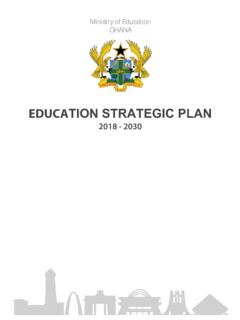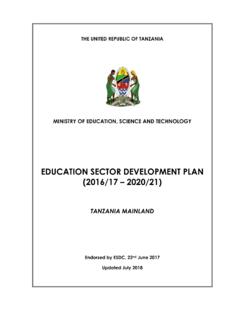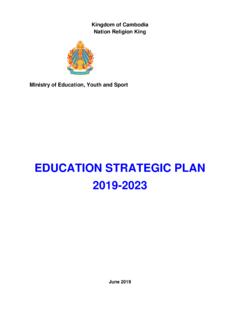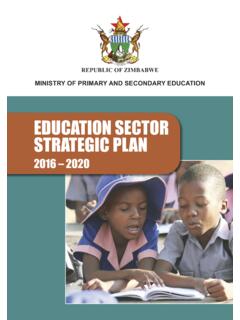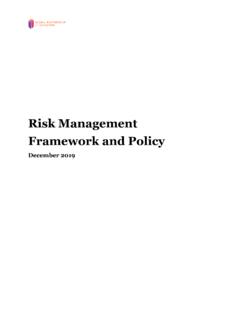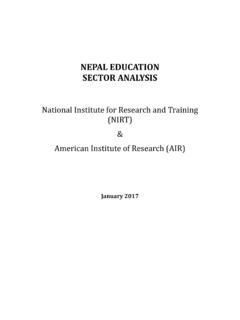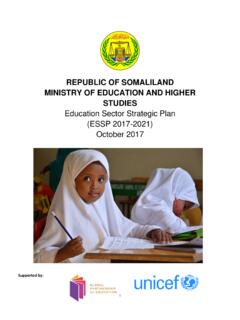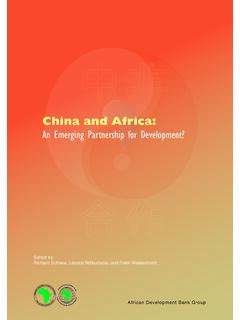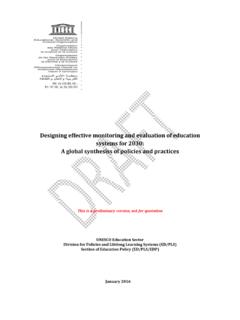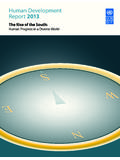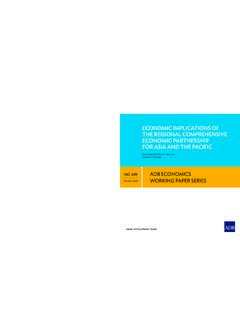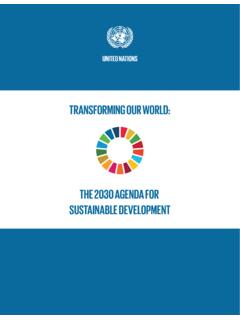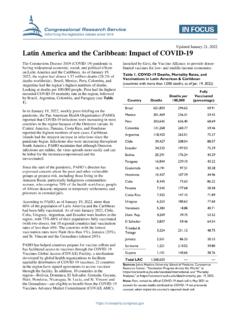Transcription of Kix Gender Final English - Global Partnership for Education
1 ACHIEVING Gender EQUALITY IN AND THROUGH Education A KNOWLEDGE AND INNOVATION EXCHANGE (KIX) DISCUSSION PAPER JULY 2019 Achieving Gender Equality In And Through Education 2 Acknowledgments This paper was written by Elaine Unterhalter, independent consultant and professor of Education and international development at University College, London, with inputs from Colleen Howell and Jenny Parkes, under the guidance of Jane Davies, Senior Education Specialist and Thematic Lead for Gender Equality at the GPE Secretariat. The inputs and feedback of the following individuals who reviewed this paper are gratefully acknowledged: Nora Fyles, Christina Kwauk, Anna Bertmar Khan, Martha Muhwezi, Dana Schmidt, Clio Dintilhac, Albert Motivans, Joyce Tepu, Venance N.
2 Manori, Adeline Rasmata Ouedraogo, Jeanne Kopieu, Scholastique Mpengekeze, Alice Nindorera, Nhull Mugas, Aida Orgocka, Lucia Fry, Magdalene Lagu, Silje Skeie, Sanaullah Panezai, Yolande Miller-Grandvaux, Matilda Branson, and Yona Nestel. In addition, we would like to acknowledge Nora Fyles of UNGEI for allowing us to organize consultation sessions to gather feedback on this paper during the GRESP regional workshops which were held in Nairobi, Kenya in November 2018. Through these consultations, representatives from Zimbabwe, Somalia Federal Government, and Puntland provided useful feedback on the paper. Achieving Gender Equality in and through Education 3 Table of Contents Executive Summary.
3 6 1. The importance of Gender equality in and through 7 2. Paper development and consultation 3. Challenges to achieving Gender equality in and through Challenges faced by girls and boys in access, participation and Challenges within Education Challenges in political, social and economic 4. How GPE supports Gender equality in and through Education .. 19 5. Global public goods for Gender and girls Education : frameworks, research, data, tools, capacity and innovation .. 27 Frameworks .. 27 Funding streams .. 28 Research .. 29 Data .. 30 Tools .. 31 Networks, convening and coordination mechanisms .. 34 Innovations .. 36 6. Gaps in Global goods .. 33 Project vs systems Enabling environment in Critical gasps in Global 7.
4 Potential investment areas .. 39 Broad thematic areas for investment .. 45 Specific examples of investment areas .. 47 Bibliograhy ..50 Annex A. GPE fact sheet on Gender equality .. 60 GPE s Gender Equality Policy and Strategy .. 60 Key results .. 61 Annex B. Global and regional frameworks .. 63 Global frameworks .. 63 Regional frameworks .. 66 Annex C. Countries in GPE for which there are peer-reviewed studies (2007-2018) in the ERIC database on effective interventions identified by Sperling & Winthrop (2015) .. 68 Achieving Gender Equality in and through Education 4 A note on the KIX consultation process The Global Partnership for Education s Knowledge and Innovation Exchange (KIX) thematic funding will support Global and regional initiatives that use knowledge exchange, evidence and innovation to help developing countries solve critical educational challenges.
5 It will support: Capacity development and knowledge exchange among developing countries: activities that strengthen national capacity through peer review and exchange, creation of learning modules and diagnostic tools, and face-to-face exchange Evidence and evaluation: activities that aim to consolidate and/or extend knowledge about how to improve educational outcomes and national Education systems Innovation pilots: piloting of approaches, methods, tools or products that solve persistent educational challenges Investments will be guided by the priorities of developing country partners and allocated through a competitive process managed by an independent grant agent.
6 Knowledge products, innovation pilots, and related tools developed through KIX funding will be shared through the Learning Exchange to amplify their uptake. The purpose of this paper is to describe the current landscape in Gender equality in Education and spark discussion and debate around potential areas for KIX investment. The paper is part of a series of discussion papers, drafted to support the engagement and consultation of developing country partners and technical experts in the initial design of the GPE Knowledge and Innovation Exchange. Achieving Gender Equality in and through Education 5 Acronyms and Abbreviations AU African Union CAMFED Campaign for Female Education CAMPE Campaign for Popular Education CEDAW Convention on the Elimination of All Forms of Discrimination Against Women CESA Continental Education Strategy for Africa CIEFFA International Centre for Girls and Women s Education in Africa CSW Commission on the Status of Women DCP Developing Country Partner DFID Department for International Development DHS Demographic and Health Surveys ECW Education cannot wait EMIS Education management information systems ERIC Education Resources Information Center ESP Education sector plan ESPIG Education
7 Sector program implementation grant FAWE Forum for African Women Educationalists FCAC fragile and conflict-affected countries G-7 Group of Seven GEC Girls Education Challenge GEM Global Education Monitoring GEPS Gender Equality Policy and Strategy 2016-2020 GPE Global Partnership for Education GPI Gender parity index GRA Global and Regional Activities GRESP Guidance for Developing Gender -Responsive Education Sector Plans KIX Knowledge and Innovation Exchange LEG local Education group MICS Multiple Indicator Cluster Survey NGO non-governmental organization SES socioeconomic status SDG Sustainable Development Goal SRGBV school-related Gender -based violence TEP transitional educational plan UN United Nations UNESCO United Nations Educational, Scientific and Cultural Organization UNGEI United Nations Girls Education Initiative UNICEF United Nations Children s Fund USAID Agency for International Development Achieving Gender Equality in and through Education 6 Executive Summary The importance of Gender equality in and through Education Achieving Gender equality in and through Education is at the heart of the human rights agenda, and the key to achieving the transformational 2030 Agenda for Sustainable Development.
8 Global trends are increasingly recognizing the intrinsic and extrinsic needs for investing in girls Education , especially for adolescent girls, including in situations affected by fragility and conflict. Educating girls delivers a ripple effect that not only benefits the girls themselves but also makes their families, communities and countries healthier, safer and more prosperous. According to the Global Partnership for Education s Gender Equality Policy and Strategy 2016-2020 (GEPS), achieving Gender equality refers to the equal rights, responsibilities, and opportunities of women, men, girls, and boys, and equal power to shape their own lives and contribute to society.
9 1 Achieving Gender equality in and through Education requires systemwide institutional change in the way policies and plans are developed to ensure no one is left behind. Gender equality is a key cross-cutting theme in the Sustainable Development Goals (SDGs), as articulated in the Education goal (SDG 4), and central to the achievement of other SDGs, including ending poverty (SDG 1), enhancing health and well-being (SDG 3), supporting Gender equality and women s rights (SDG 5), establishing decent work (SDG 8) and promoting peaceful and inclusive societies (SDG 16). 1 GPE, Gender Equality Policy and Strategy 2016-2020 (Washington, DC: GPE, 2016b), 5.
10 Key Terms Gender : The socially constructed roles, behaviors, activities and attributes that a given society considers appropriate for men and women.* Gender Equality: The equal rights, responsibilities and opportunities of women, men, girls and boys, and equal power to shape their own lives and contribute to society. Gender Equity: Included in the broader idea of Gender equality, fairness and justice regarding benefits and needs of women/girls and men/boys. Gender Equality In And Through Education : Gender equality is present in the Education system in terms of access, learning and opportunities for girls and boys, and also in the content and delivery of the Education , so that learners leave school and contribute to a more equitable society.
